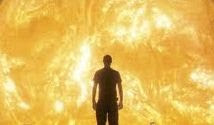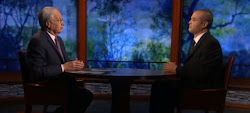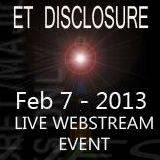Paste the link if you can't access the links.
http://www.newscientist.com/article/mg20327191.600-dark-energy-may-disguise-shape-of-universe.html?full=true
Love and Light.
David
Dark energy may disguise shape of universe
* 03 August 2009 by Pedro Ferreira
WE LIVE in a special time. For the past two decades, most of my colleagues and I have been working under the assumption that we can know everything about the universe. We know the amount of matter and energy it contains. We know its shape is flat. We can trace its history from the earliest moments after the big bang and we can even predict its fate. Or at least we thought we could.
Why were we so confident? Exquisite measurements of the radiation left over from the big bang led us to believe that we could work out the curvature of the universe to within a few per cent. In doing so, we have determined how much energy the universe contains and that most of it is in an exotic form called dark energy, which is driving the expansion of space.
However, recent discoveries have left me wondering if these claims were premature. As we learn more about dark energy and its effect on the expansion of space and time, we find that dark energy and the shape, or geometry, of the universe are worryingly intertwined.
By changing our assumptions about dark energy we can radically modify our constraints on the shape of the universe. Equally, without a much more precise measurement of the geometry, it is impossible to determine the nature and evolution of dark energy. Our picture of the universe has, to some extent, been blown wide open again.
This state of affairs has serious implications for how we proceed in our exploration of the universe. A host of missions are being planned to pin down dark energy, but unless we measure the geometry much more accurately, the whole endeavour could be futile. In short, we will remain resolutely in the dark about dark energy.
A host of missions are being planned to pin down dark energy, yet they could all be in vain
It was Einstein who showed that what we mean by gravity is really the geometry of space and time. His general theory of relativity describes how space-time is deformed and stretched by whatever it holds and, in return, the different constituents of the universe will coast along the bends and warps of space-time. If we apply Einstein's idea to the whole of space-time, we find that the universe expands according to the underlying geometry of space itself.
The geometry of the universe can take three possible forms, each of which is intimately related to the total amount of matter and energy in each unit-volume of space. If there is too much stuff, the universe will have a positive curvature. This means it curves like the surface of a ball and may collapse in a big crunch. Too little and the curvature will be negative: the universe will curve like a saddle, flying apart unfettered by the gravitational pull (see diagram).
Only if the universe has exactly the right density, corresponding to a few protons per cubic metre, will it be flat and have zero curvature. It will continue expanding forever because the energy of all the constituents that are flying apart carefully balances their gravitational pull.
Because it is so central to the evolution of the universe, understanding the curvature of space is one of cosmology's great goals. Before the late 1990s, we suspected that the universe had to be almost flat. Otherwise it would have either flown apart or collapsed very early on in its existence.
But all we had was a rough idea and little else. In fact, at any given conference on cosmology at the time, a few different models would be discussed: one with flat geometry and full of dark matter, another, also flat and containing dark energy, and yet another one which was emptier than all the others and so had negative curvature. Every now and then, the possibility that we lived in a positively curved universe would be mooted but without firm, precise observations, there was much rhetoric and no conclusions.
This changed as measurements of the cosmic microwave background (CMB), the radiation left over from the big bang, became more accurate and a simple method to use them took hold. In the late 1960s, a group led by Yakov Zel'Dovich in the Soviet Union, published a short paper showing that an accurate map of CMB radiation would have very distinct features: it should consist of randomly distributed hot and cold spots with a characteristic size.
Zel'Dovich's group calculated how large the spots were when they formed 370,000 years after the big bang, an era in cosmic history known as recombination. How large the spots appear to us today depends on how fast the universe has expanded since then (see diagram). Under reasonably simple assumptions about what the universe is made of, we can determine the distance to recombination with some accuracy. Knowing this, and assuming the universe is flat, we can use standard trigonometry to work out the angular size of the spots in the sky.
I said "assuming the universe is flat". If the universe is not flat, then we have to use a different set of rules. The typical size of hot and cold spots in a flat universe should be about 1 degree across the sky, approximately twice the angular size of the moon as seen from the ground. If the hot and cold spots look bigger to us, then space has positive curvature. If they look smaller, then the curvature is negative.
In 1992, NASA's COBE satellite provided the first all-sky map of the hot and cold spots. The pictures were simply too blurred to pin down the universe's geometry, but they triggered a gold rush as teams vied with each to take clearer pictures of the CMB, hoping to home in on that magical angular scale of about 1 degree.
In 1995, I moved to the University of California, Berkeley, where cosmologists were hard at work on the coalface of research into the CMB. I had started life as a theorist, but with COBE and the potential for true discovery I decided to roll up my sleeves and get my hands dirty. For me, this involved preparing for the launch and then analysing the signals collected by two experiments carried aloft by balloons: Maxima and Boomerang.
Both experiments carried a new breed of microwave detectors that were far more sensitive than any used before. They were also each equipped with telescopes that were over an order of magnitude more accurate than those on the COBE satellite. Both of these features meant that they were able to accurately map out the fine details of the CMB.
There had already been strong hints of the coveted spots in 1997 from an experiment called MAT/Toco. But it was only after a few years of whittling away at the signals in early 2000 that we saw our own clear evidence of hot and cold spots with a typical size of 1 degree. This meant that the geometry of the universe was almost exactly flat. We were seeing direct and unambiguous evidence that we lived in a very special universe.
Together with later measurements from NASA's WMAP satellite, the results nailed down the geometry of the universe to within a few per cent. Suddenly life became much simpler for cosmologists who had been working on different theoretical models with different geometries. From then on there was one less free parameter to fiddle with and almost all the papers and textbooks stated up front that the universe was flat. Finally we had some certainty about the state of the universe.
Except that another dramatic narrative was unfolding in parallel. For decades, we had known that there simply was not enough stuff in the universe to balance the cosmic books. All the known atoms in stars, gas and dust spread out in the cosmos, add up to less than 4 per cent of the total matter and energy we knew had to exist for the universe to have developed to its current state.
Even taking into account the elusive dark matter which we believe bolsters galaxies and allows them to spin at breakneck speeds without flying apart, there still is not enough matter and energy to make it flat; the shortfall in the total energy of the universe seems to be about 70 per cent. And if this were so, the universe would have negative curvature. There must be something else out there to make up the deficit.
Repulsive material
The answer came in 1998 when two separate teams noted that distant supernovae were much dimmer than they should be. By far the simplest explanation is that the expansion of the universe is now accelerating.
Now, if the universe is accelerating then something must be pushing space-time apart. We have found that if 70 per cent of the universe is made up of an exotic, repulsive material called dark energy, then it could make up the shortfall of energy. So even though 96 per cent of the universe is invisible to us in the form of dark matter and dark energy, it does neatly explain the cosmos.
Einstein had proposed a possible candidate for this repulsive form of energy: the cosmological constant, or lambda, is a completely smooth form of energy which never dilutes as space expands. Lambda has been adopted wholesale by many cosmologists, so much so that the current, standard model is known as the lambda-cold dark matter model. And one of its main features is that the universe is flat.
But it's not that simple. To be brutally honest, we have no idea what lambda physically represents. Even our best guess gives us the wrong answer by more than a hundred orders of magnitude. So given our manifest ignorance, we have to allow for other possibilities: dark energy may not be constant in time and space. As long as our models predict the right amount of cosmic acceleration we are allowed to keep our options open.
So can we still assume the universe is flat? I thought so, until very recently, when a development shook my faith in the notion. Chris Clarkson and his collaborators at the University of Cape Town in Rondebosch, South Africa, decided to see how our knowledge of dark energy affected our measurement of the curvature of the universe and vice versa (Journal of Cosmology and Astroparticle Physics, DOI: 10.1088/1475-7516/2007/08/011).
To understand their results, remember how we measured curvature from the size of the hot and cold spots in the CMB. How big the spots appear to us - their angular size - depends on two unknowns: how far light has travelled since the CMB formed at recombination, and the geometry of space.
If we assume that the universe is permeated by a cosmological constant and contains a modicum of dark matter and atoms, we can pin down this distance very accurately by solving the equations of general relativity. But we do not really know if dark energy is the cosmological constant. If it is something with a much more complicated evolution, then we know very little about the distance to recombination. Without knowing how far away the hot and cold spots of the CMB are, we cannot predict how big they will be in a universe with negative, zero or positive curvature.
This means that we cannot pin down the geometry of space-time. We are then caught in a vicious circle: to know the geometry of the universe we need to pin down dark energy. Yet to determine how much dark energy there is, we need to know the geometry. Knowing one without the other is futile and a recipe for disaster.
These recent results are sobering. Having proselytised about the great discovery of the millennium, that the universe is flat, I now find myself backtracking. And there is a sense of foreboding that it may never be possible to know our cosmos as well as we'd like to.
There is a sense of foreboding that it may never be possible to understand our cosmos
Except that we seem to have entered a new, more ambitious, era in cosmology. While cosmology in the 1990s was very much driven by attempts to measure the geometry of the universe, as well as a host of other properties, the focus now is very much on pinning down the great unknown - dark energy.
How can we do this without knowing the geometry? Happily all is not lost: new experiments are being designed to probe the deepest recesses of the cosmos. The more information there is from different stages in the evolution of the universe, the easier it will be to figure out not only what dark energy is doing at different times, but also what the geometry of the universe is doing in different places.
Plans are afoot to build a gargantuan radio telescope called the Square Kilometre Array, either in Australia or Southern Africa, which would allow us to measure the positions of one billion galaxies. Galaxies that have clumped together can be seen as proxies for the hot and cold spots in the CMB, so the net result is akin to sampling the state of the universe at many different times, from which we can determine the geometry with greater accuracy.
And a new satellite mission, run by NASA and the European Space Agency, will measure how dark energy affects the evolution and interactions between galaxies out to tremendous distances.
These projects will be up and running within a decade. In the meantime, other smaller projects are chipping away at our ignorance. Indeed, this new age of discovery and exploration will bear fruits which, hopefully, will one day enable us to understand the geometry of the universe. It is just going to take a bit longer than we originally thought.
Pedro Ferreira is a cosmologist at the University of Oxford, UK, and author of The State of the Universe (Phoenix, 2006)





No comments:
Post a Comment